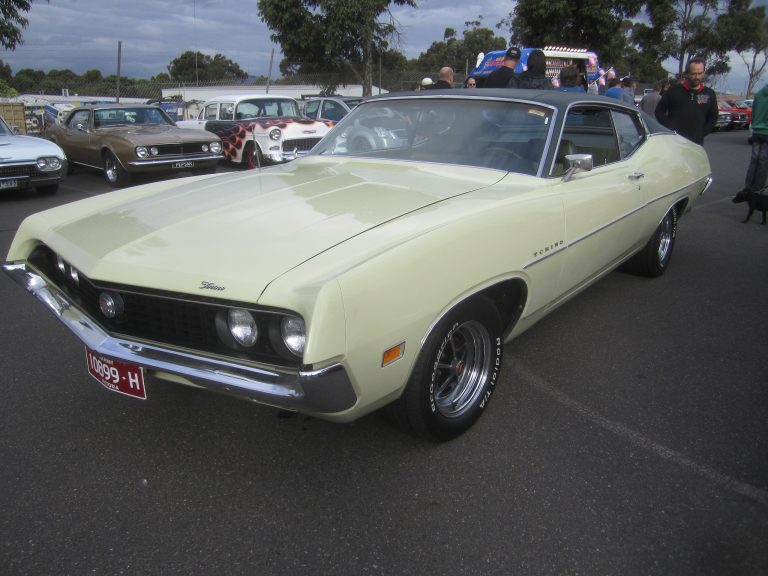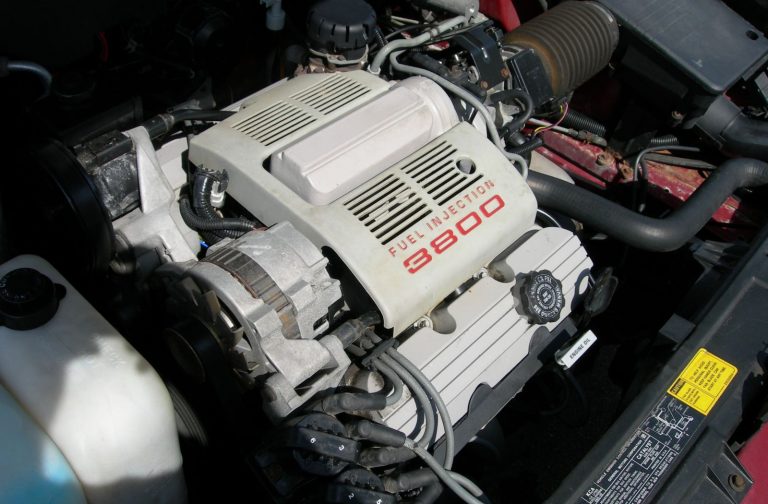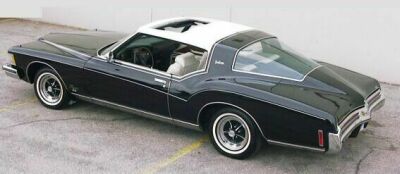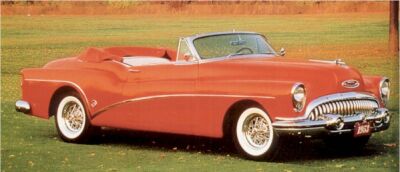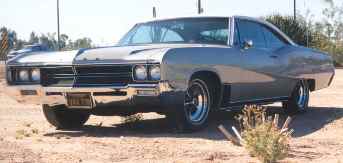Buick 455 Engine Guide

Meet Zach
Zach is a founder of 8020 Media and experienced automotive writer with 400+ articles written over his career. While he has a passion for sharing automotive knowledge with the world he also has more than a decade of hands-on experience modifying and maintaining a wide range of cars. His experience and technical knowledge lead to high-quality and well-researched content spanning classics to modern day muscle cars.
The Buick 455 is a big block 7.5L V8 that was produced from 1970-1976. It came at a time when big block V8’s were dominating the muscle car world. The 455 cubic inch motor made 350-370 horsepower and 510 lb-ft of torque in its early days. However, changes with gas & emissions laws – as well as new standards to measure horsepower – dropped output to 205hp by 1976. Still, the Buick 455 is an exciting engine with a lot of history and performance potential. In this guide, we discuss Buick 7.5L V8 specs, history, performance, reliability, and more.
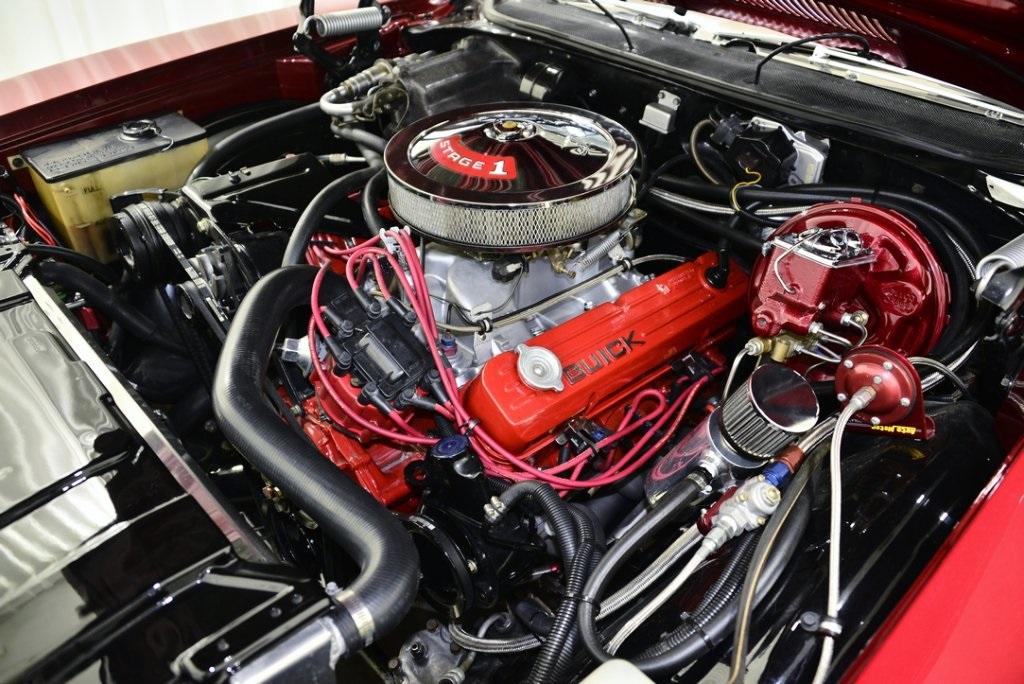
What Cars Use the 455 V8?
Buick 7.5 V8 engines were in the following years and models:
- 1970-1976 Buick Electra
- 1970-1976 Buick Estate
- 1970 Buick Wildcat
- 1970-1976 Buick LeSabre
- 1970-1976 Buick Riviera
- 1970-1972 Buick Skylark
- 1971-1973 Buick Centurion
- 1973-1976 Buick Century
- 1973-1976 Buick Regal
Buick 455 7.5L Engine Specs
Specs for the Buick 7.5L big block V8 are as follows:
Engine: Buick 455 V8
Displacement: 455 cu in (7.5L)
Configuration: 90° V8
Bore x Stroke: 4.3125″ x 3.90″
Compression Ratio: 10:1 or 10.5:1 (1970) 8.5:1 (1971-1974) 7.9:1 (1975-1976)
Firing Order: 1-8-4-3-6-5-7-2
Max Horsepower: 350-370 HP @ 4600
Max Torque: 510 lb-ft @ 2600
We’ll talk about certain specs more in-depth when we cover the history of the Buick 455 big block engine. A lot of the specs and horsepower ratings went thru some drastic changes due to unleaded fuel, emissions laws, and new horsepower standards. For example, compression ratio was dropped significantly in 1971 to prepare for lower octane unleaded gasoline.
Anyway, the engine offers 7.5L of displacement by ways of a 4.3125″ bore and 3.9″ stroke. It’s actually the same stroke as the smaller 400 and 430 cu in Buick engines. Buick bored the engine to end up with the 7.5L displacement. This made the 455 a thin-wall casting engine block that weighs a lot less than engines of similar size. For example, the Chevy 454 is a whopping 150 lbs heavier than the Buick engine.
Due to the same stroke as the smaller 400 and 430 engines most parts are actually interchangeable. The Buick 455 pistons and heads are a couple of the exceptions, though. All these specs allowed the 7.5L big block V8 to make up to 370 horsepower and 510 lb-ft in 1970 models. However, power declined over the years with final 1976 ratings closer to 200hp.
History of the Buick 7.5 V8
The big block Buick 7.5 engine came out during an exciting period for muscle car enthusiasts. It was a time when huge V8’s – like the Chevy 454, Cadillac 472 & 500, & Pontiac 455 – began dominating the American car world. Not all of these engines were in true muscle cars. Regardless, these big block engines around the release of the Buick 455 in 1970 were increasingly popular.
Unfortunately, this time period also marked the start of the end of muscle cars as we knew them. A gas crisis in the 70’s, stricter emissions laws, and a move to unleaded gasoline were all important factors. On top of that, a change in horsepower measurements meant less attractive marketing. Suddenly, engines like the 7.5L Buick went from 350+ horsepower to barely 200hp by 1976.
We’ll circle back to these factors in a moment. Another interesting piece of history around the Buick 455 are the Oldsmobile and Pontiac 455 engines. All three brands were under GM so technically these were all GM motors. However, during this time period each company made their own engines.
While the Buick, Olds, and Pontiac share the same 7.5L displacement they’re all unique, different engines. For example, Buick accomplished the displacement by boring the engine and creating a thin-wall casting block. Oldsmobile instead stroked the engine to end up with a 4.126″ bore and 4.25″ stroke vs the 4.31″ bore x 3.90″ stroke of the Buick.
Why Did the Buick 455 Power Ratings Decline?
Power ratings went down drastically on the 455 for a number of reasons. Many are the driving factors behind the death of true muscle cars from the 60’s and early 70’s. Emissions, unleaded fuel, and lower horsepower measurements were some of the main reasons the Buick 455 saw such a large decrease.
All these topics could make interesting muscle car history articles of their own. It’s stuff we’ll circle back to in greater detail in the future. For now, let’s look at some of the quick cliff notes on changes that affected the Buick 7.5L big block V8 engine.
Unleaded Gasoline & Lower Compression
Although leaded gasoline wasn’t fully banned in the U.S. until 1996 it began to phase out in the 1970’s. In 1971, Buick lowered the compression ratio of the 455 cubic inch engine. Many engines of this era saw a similar change in preparation for unleaded fuel.
Ultimately, lower compression means less performance. It was a necessary change due to the lower octane rating and worse knock resistance of unleaded fuels. Too high a compression ratio would have been a recipe for disaster.
Buick 455 SAE Gross vs SAE Net Power Ratings
The lower quality fuel and lower compression ratio had an important impact on Buick 7.5L horsepower. However, it was actually the change in horsepower standards that put the biggest dent in 455 power ratings. SAE stands for the Society of Automotive Engineers. They’re now simply known as SAE International and are responsible for developing standards for engineering professionals in several industries.
Anyway, in 1972 there was a shift from SAE gross horsepower ratings to SAE net. Gross power numbers are measured on a test stand with no external engine parts. In other words, it’s the horsepower the engine makes without exhaust, no engine driven accessories, and with optimal ignition timing. This doesn’t really tell you how much power and engine makes installed in a car during normal on-road conditions.
SAE net power ratings are also done on a test stand. However, net power figures are obtained with all accessories, exhaust, and stock ignition timing. This gives a more realistic horsepower rating for an engine actually installed in a vehicle.
It’s important to note – this change in power rating didn’t have any real downsides on performance. The Buick 455 still made the same actual power. Power ratings were simply lower (and more realistic) due to the new SAE net standards.
EPA Emissions Laws
During the remainder of Buick 455 production there were a number of stricter emissions laws coming into play. Unleaded gasoline ties into this as we discussed above. Additionally, catalytic converters became standard in 1975.
Add it all up and you’re left with just over 200 horsepower versus the original 350+ horsepower ratings. Yes, unleaded fuel, lower compression, and catalytic converters were all important factors. However, the change in SAE standards was the single biggest impact. While power appears to drop substantially, the actual performance of the 455 cubic inch engine didn’t change as much as the horsepower suggests.
Buick 455 Engine Problems & Reliability
With much of the background info out of the way let’s jump into Buick 455 reliability and problems. We’ll then move onto the most exciting info – in our opinion – and discuss the 7.5L big blocks potential with some modern engine upgrades.
The 455 is a very stout engine overall. Of course, it’s also a ~50 year old engine as of today. An engine that old is going to require a little extra TLC up-front. A lot depends on the condition, but chances are most 455’s you come across will need some extra work.
A few known issues with the Buick 455 engine include:
- Oiling problems
- Bearings
- Engine block
In the next sections, we will briefly discuss each of these problems. The oiling issues are the biggest flaw with the 455. Bearing and engine block problems are limited and rarely happen in stock form. Ultimately, when staying stock the Buick 7.5L big block is a great engine with very few flaws. If you start modding gearing and throwing more power at the engine then a few other potential concerns arise.
1) Buick 455 Oiling Problems
Oiling is without question the biggest topic when it comes to Buick 455 engine problems. One of the oiling issues mostly affects the 1970 blocks due to smaller passages. This leads to less oil pressure at high RPM’s. Drilling out the oil passages is a way to solve this issue on the ’70 455 engine blocks.
The more common issue is the oil pump housing wearing down. It generally isn’t the gears within the pump but instead the housing itself. As it wears down the engine loses some oil pressure. TA Performance offers a great option to address this issue for the long-term.
A number of other oiling upgrades and changes exist depending on your goals. Certain things may not need to be addressed unless you’re shooting for higher power or RPM builds. Either way, the oiling problems are well known on the Buick 455 and plenty of aftermarket solutions exist.
2) 7.5L Big Block Bearing Failures
Bearing issues are a pretty rare thing on the 455. Some agree the 7.5L engine doesn’t fare well with sustained highway speeds and lower gears. Be careful going with 3.70 or 4.11 gears if you plan on doing a lot of steady speed highway driving.
The higher RPM’s with shorter gearing seems to take a toll on the Buick big block engine. Part of this could tie into the oiling issues and worse oil flow at higher revs.
3) 455 Engine Block (Mostly at 600+ HP)
The engine block issue on the 7.5L V8 is another quick topic. Remember, the Buick 455 is a thin-wall cast block due to Buick boring out the cylinders to achieve the larger engine. Block failures seldom occur before 600 horsepower and many agree that’s the ballpark you should start considering a girdle.
TA Performance also offers a popular option to strengthen the block with their girdles. At $795 plus the cost of machining it’s not the cheapest upgrade around. However, it’s well worth the peace of mind and extra durability if you’re shooting for a 600+ horsepower build.
It’s even more important these days with the number of 455’s thinning out. It’s not an engine you want to damage as they aren’t quite as easy to source as they once were. Point is – if you want to build a Buick 455 then do it right up-front and address the block for bigger power builds.
Buick 455 Engine Upgrades
Bolt-on engines upgrades (and bigger mods) are a topic we’ll address in an article of its own one day. There’s obviously a lot to get into to cover all the mods, costs, considerations, etc. Nonetheless, the Buick 7.5L big block V8 is a very capable engine with a few simple mods. A great starting point for upgrading your 455 includes the following:
- Cams
- Heads
- Intakes
With just these mods it’s very realistic to end up in the 425-475 horsepower ballpark. The Buick 455 is known for being a big torque engines, so that’s where numbers are even more impressive. Torque with these simple mods will likely shake out around 500 lb-ft with more possible.
This is all with the lower compression ratio found on the ’71-76 engines. With some higher compression pistons you’ll likely squeeze out even more power. Then, of course, plenty more upgrades and potential exist for the Buick 7.5L engine.
Check out this article from Motor Trend for more data and details on these simple Buick 455 engine upgrades. With 455 cubic inches of displacement and modern advancements this engine certainly has lots of potential.
Buick 7.5L Big Block V8 Summary
The Buick 455 came around at an exciting time of big block V8 engines. Buick was quick to get in on the displacement shootout of GM big-blocks of the era. With 510 lb-ft the 7.5L engine offered more torque than any other muscle car at the time. Unfortunately, the engine also came during a time that marked the start of the end in the muscle car world.
Unleaded gasoline, a gas crisis in the ’70s, and emissions laws really hindered muscle cars. As such, the Buick 455 went from making 350+ horsepower in its early days to a much less impressive 205hp by 1976. Still, the 7.5L big block V8 is an exciting engine that offers a lot of potential to this day.
Oiling problems are a common topic and well-known issue on the Buick engine. However, that’s really the only flaw until you start pushing big power or opt for too low gearing and sustained highway driving. It’s pretty small stuff in the grand scheme.
Despite lower power ratings over the years, all these Buick engines (even with lower compression) offer tons of potential today. Thanks to its massive 455 cubic inch design and modern advancements the 7.5L V8 can make impressive numbers. Simple bolt-on mods like cams, heads, and intakes can push the engine to 425+ horsepower and 500+ lb-ft. If you’re looking to go further the Buick 455 has you covered.

